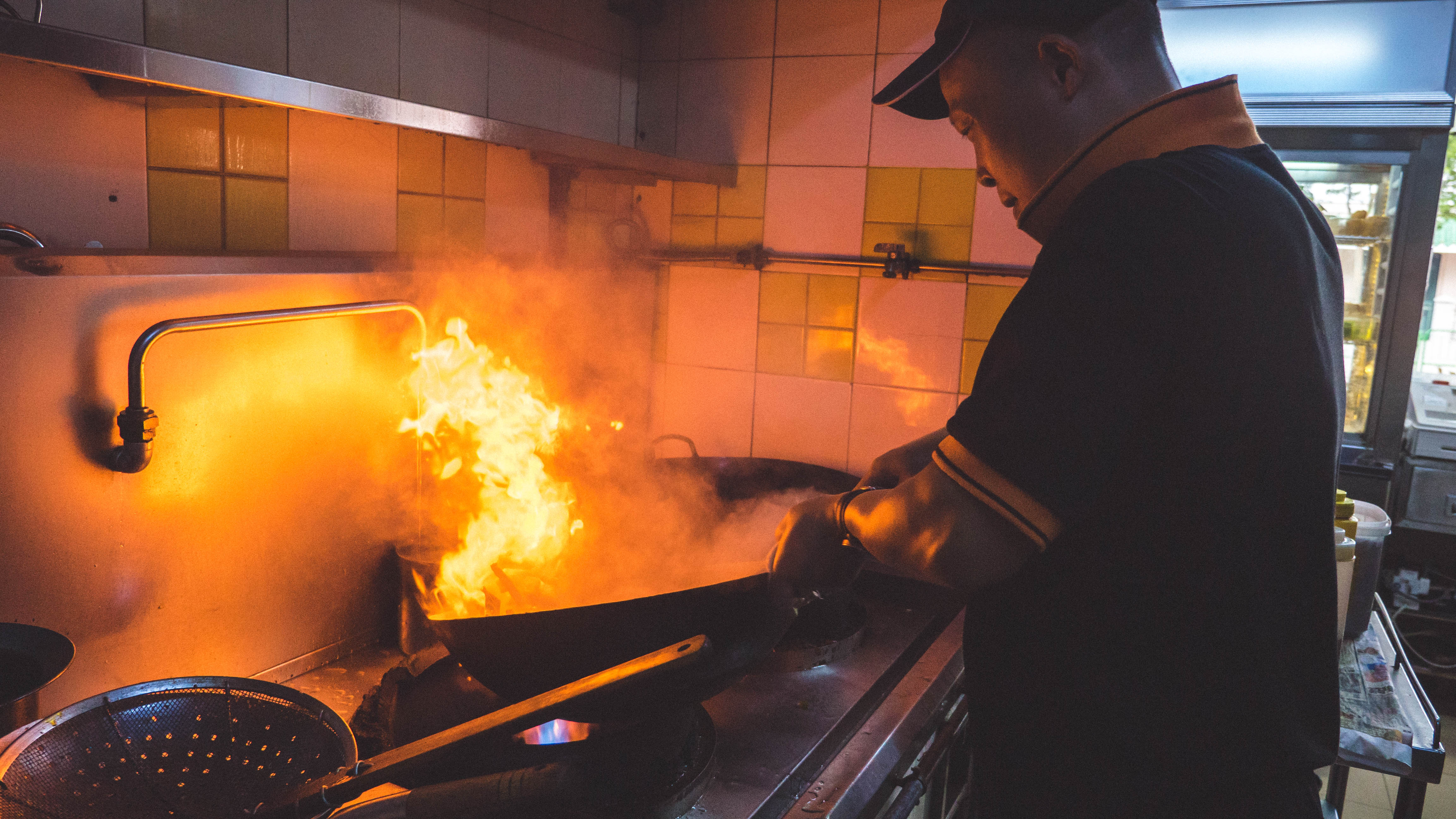After you have selected your ingredients, the stall assistant chops everything into bite-sized pieces before passing them to the cook, who picks out the ‘tougher’ chunks and tosses them into a wok filled with 3 inches of boiling water.
The boiling is necessary because some ingredients—like potato—have a longer cooking time while others, like luncheon meat, require no cooking at all. If you skip the boiling and go straight to stir-frying, you will end up with a salad of raw eggplant, medium-rare lotus root, and blackened beansprouts.
“So cook in water first,” advises Chef Tong.
Once boiled, he dumps the water and dries out the wok with a quick blast from the stove. Now, you are finally ready to make Mala Xiang Guo.
In goes the oil—a mixture of vegetable oil and beef fat—followed closely by dried chillies, salt, and the all-important, game-changing Mala Sauce, a secret blend of twenty to thirty herbs and spices. Every stall has a different recipe, but You Ma You La’s sauce contains star anise, cinnamon, and the fermented umami goodness of Lao Gan Ma tofu chilli, as well as about 20 other things that I am not allowed to disclose under threat of death.

Da La eaters, however, will find their dish garnished by the hotter ‘xiao mi jiao’ or ‘millet chilli’—a close relative of the Tabasco pepper used in western cooking. But despite its name, which translates to numb-spicy, most cooks do not add any numbing Sichuan peppercorns into the mix. This is because the peppercorn has an astringent flavour, and can be quite unpleasant for Singaporeans who are unaccustomed to its sharp tang and numbing sensation.
So instead, he adds a drop or two of Sichuan peppercorn oil. More for fragrance than heat.

Now that you know how to make MLXG, you can go home, dig out your dusty apron, then throw it in the trashcan and order your dinner on Grab or Deliveroo. After all, Chef Tong scoffs when I ask him if it’s possible to replicate his MLXG at home.
Not likely, he insists, because home cooks don’t have access to the powerful flame or the complicated but all-important ‘mala sauce’.
“You can try, but don’t expect the same ‘explosive’ fragrance.”

The repressed SJW inside me awakens, and I feel an urge to lecture them about regional Chinese cuisines; about how the sweeter flavours of Shanghai are entirely different from what’s served in Sichuan.
But I can’t. It would be entirely pointless because—true to stereotype—the answer is yes, I do love Mala. In the past, I would coax, psycho, or Machiavelli my reluctant friends to join me at Bugis for hot pot.
In 2019, however, the game has changed. Instead, I am the one consenting to my colleagues’ suggestions of ‘Mala?’ for lunch.
It is no great mystery how this revolution happened. It is thanks to MLXG, that spicy bubble-tea which has spread far and wide into every hawker centre and food court. Like salted-egg yolk or the Coffee bun which reigned some years before it, the flavour of Mala seems infused into Singapore’s current culinary zeitgeist.
But despite its ubiquity and popularity, MLXG’s history and origins are unknown. Search Google or Baidu if you don’t believe me. The results throw up approximately 9 million recipes but not a single reliable account of how the MLXG was invented, or by whom.
Which, of course, merely made me even more curious.
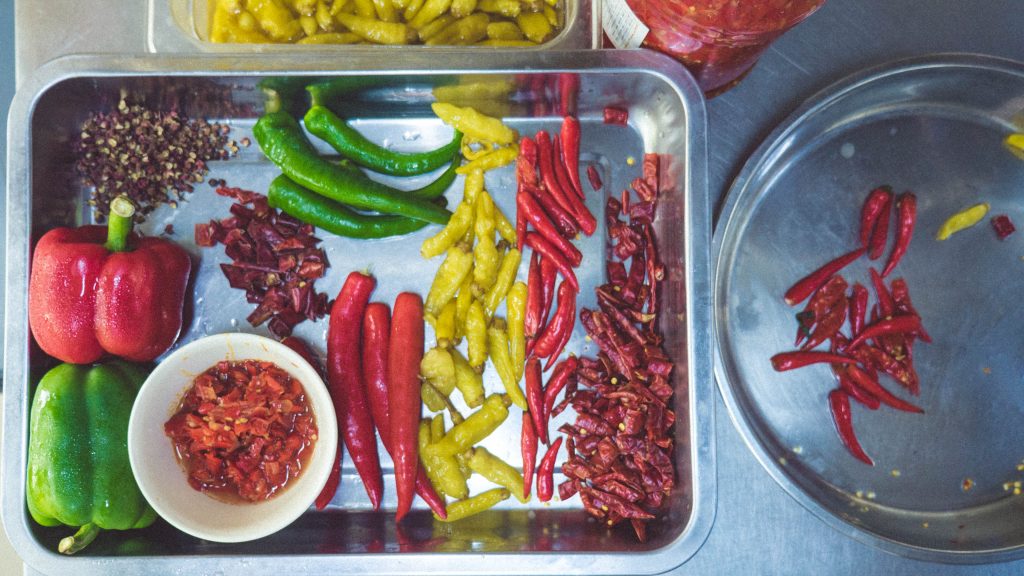
Conventional wisdom and internet hearsay suggest that MLXG comes from Chongqing. This argument makes sense because Sichuan is the undisputed birthplace of Mala and Chongqing is its culinary capital.
Yet, right off the bat, Mr Zhang tells me—in somewhat worried tones—that he has never seen a single MLXG stall in Chongqing. He has eaten hotpots until he’s thoroughly sick of them, and he can list every obscure dessert from Sichuan. However, his first encounter with MLXG was in a food court in Singapore.
“When I was a student in Chongqing, there was no MLXG. The closest thing to MLXG was a Mao Cai. Which is a dish that allows you to pick your ingredients—pork, vegetables, chicken blood—like MLXG, but they cook hot pot style, in the Mala broth,” he told me.
Mr Yang Jian, who owns Singapore’s You Ma You La franchise, tells me the same story. As a Chongqing native who has spent twenty-odd years cooking Sichuanese cuisine in Singapore and China, there’s probably no one better qualified to explain the MLXG. Yet he too declares that MLXG does not exist in Chongqing.
There’s “no such thing” in Sichuan, he insists, which has “too much good food” for the MLXG to stand a chance.
So if not Sichuan, then where?
Mr Yang Jian considers my question for a moment and sucks down his Ice Milo in one long gulp before offering an alternative story. From what he’s heard, the dish originated in Northern China (Dongbei). It is the creation of Sichuanese chefs who left home to seek their fortune in the boomtowns of China’s eastern seaboard. There, they created the MLXG as we know it today, for the benefit of China’s time-strapped white collar class—who had a taste for Mala but not the luxury of lingering hours over a hotpot.
“We Sichuanese would eat hotpots because it’s much tastier, but in Beijing, they don’t have a habit of eating real hotpot, so the chefs who moved there made MLXG by adapting the basic flavours of Sichuan — the Mala, the fish-fragrant, the sweet-sour,” he explains.
Mr Mao Cong Fang of Chinatown’s Ri Ri Hong offers me a slightly different tale over kopi at People’s Park. In his version, the apocryphal Sichuanese chef was not working in Beijing, but in Shanghai, where he created the first-ever MLXG as part of a formal banquet.
However, Cong Fang reiterates that it’s only a rumour. Like the other chefs I’ve interviewed, he can’t confirm the dish’s exact provenance, just that it’s most definitely NOT Chongqing.
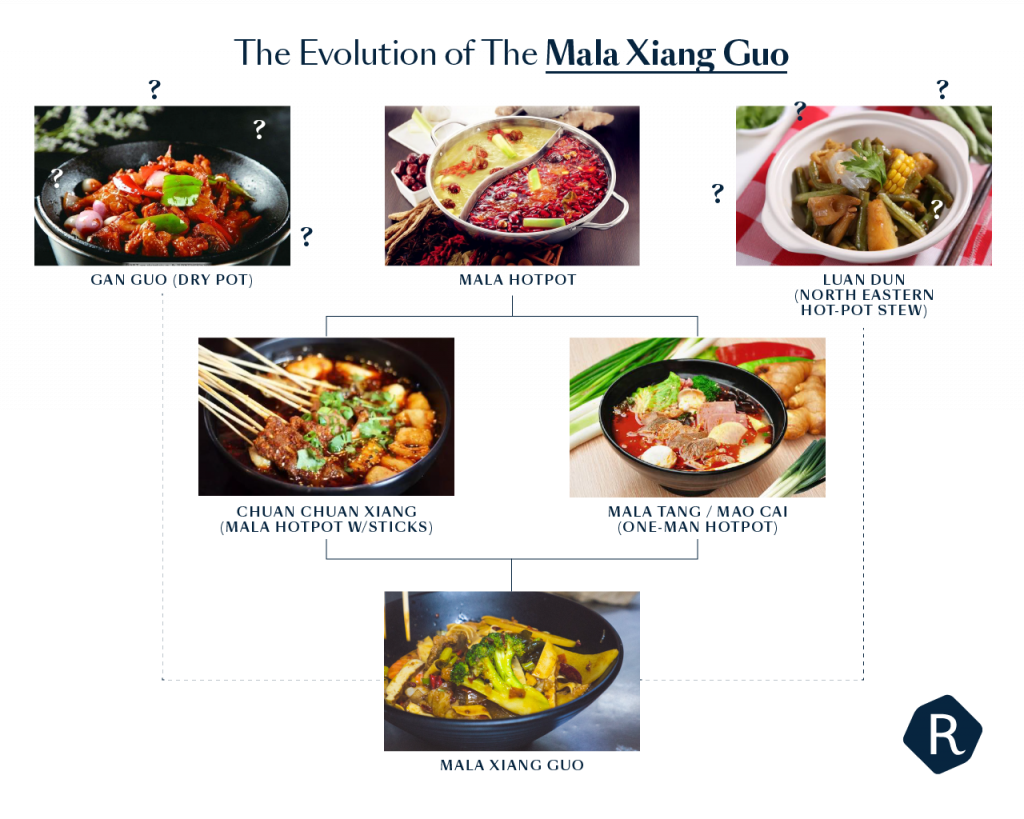
“First, you have mala hotpot, which by the time it starts boiling, your lunch hour is over. Then someone invented Chuan Chuan Xiang, where all your hotpot ingredients are skewered on a stick for convenience. After that, you have Mala tang (soup) and finally, your MLXG, which is the simplest,” Chef Tong explains.
This simplicity is what makes MLXG a natural fit for the cities like Shanghai or Singapore, where time is money, and the pace of life is consequently faster; where few have the time to indulge in the hours-long ritual of cooking one ingredient at a time.
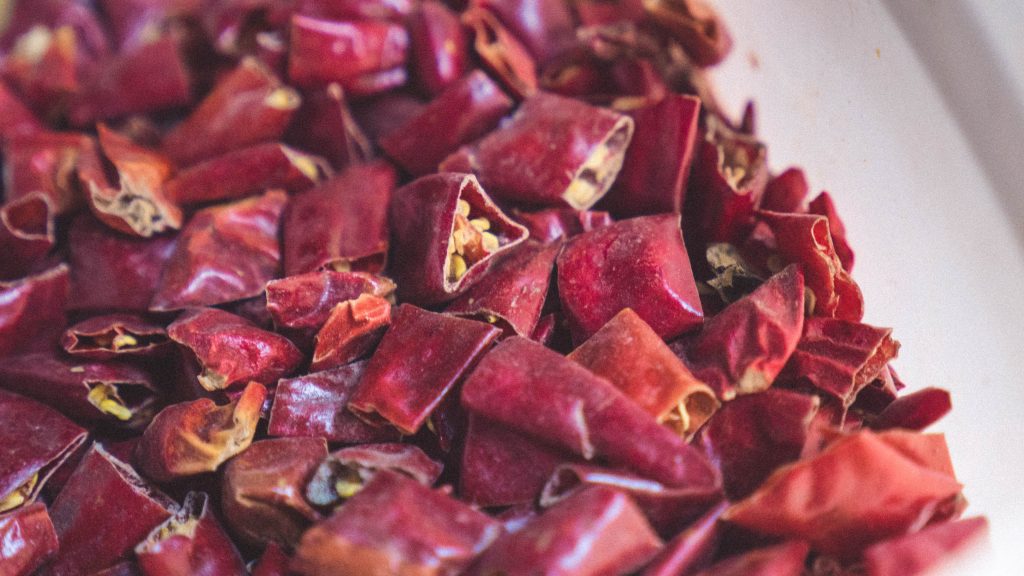
Mr Zhang Yang Long concurs. He rightly points out that Gan Guos always focus on one main protein—be it beef, chicken, rabbit or cauliflower. On the other hand, hotpots and Xiang Guos are medleys with no ‘primary’ ingredient. They are ‘defined’ only by their variety.
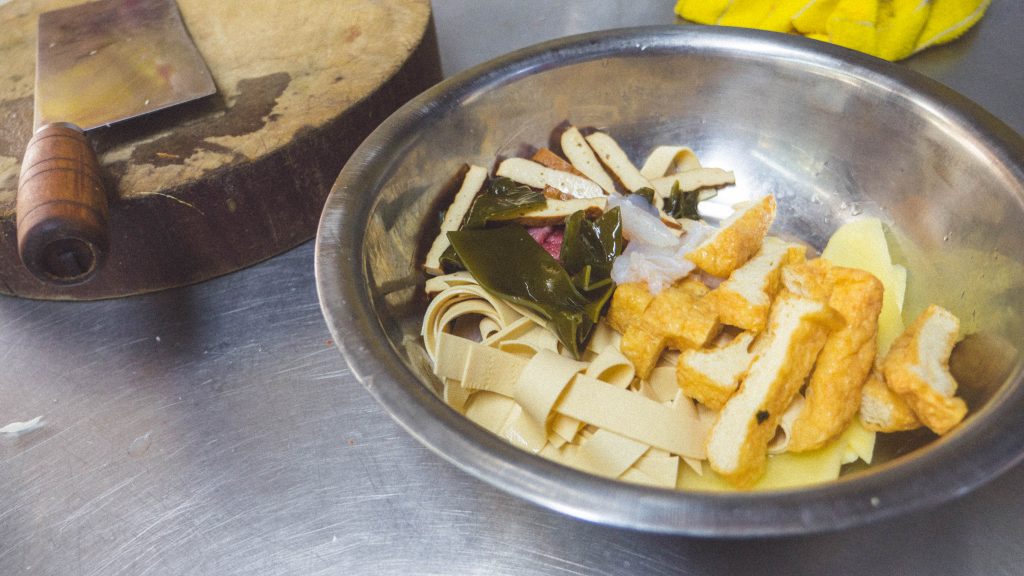
After all, the best foods are like superheroes. They need origin stories, like how the UK’s Tikka Masala was born of a customer’s complaint about ‘dryness’, or how Nashville Hot Chicken was originally cooked up to punish an adulterous husband.
You don’t get the same satisfaction with MLXG because its origins are either unknown or have yet to become myth. What you can get, however, is the story of how MLXG came to Singapore.
Most internet sources cite People Park’s Ri Ri Hong as the ‘first’ or ‘oldest’ MLXG shop in Singapore. This is untrue, and Ri Ri Hong’s boss, Mr Mao Cong Fang, will tell you so.
He was first to open in Chinatown and People’s Park, he confirms, but not the first in Singapore.
Instead, that honour belongs to—brace yourself—BreadTalk Group’s FoodRepublic, who opened 313 Somerset’s Piao Xiang Mala in 2009, after witnessing MLXG’s viral success in China circa 2008.
“We have a presence in China, so whatever’s popular there, we try to bring to Singapore. Like Bubble teas and Taiwanese brands,” says Ms Lena Tan, FoodRepublic’s Marketing Manager, “So in 2008, we actually sent a chef to Beijing to learn about the dish and adapt it for Singapore.”
And contrary to what I believed, the stall took off quickly. Thanks to a lack of competition and much curiosity, people would come from all over to taste the new flavour of the MLXG.
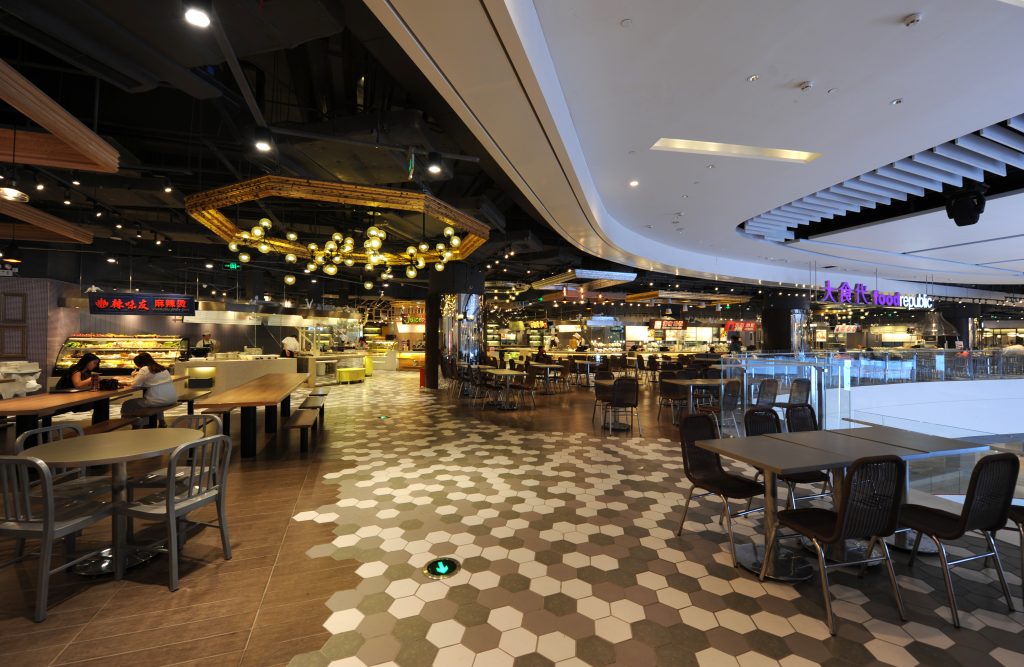
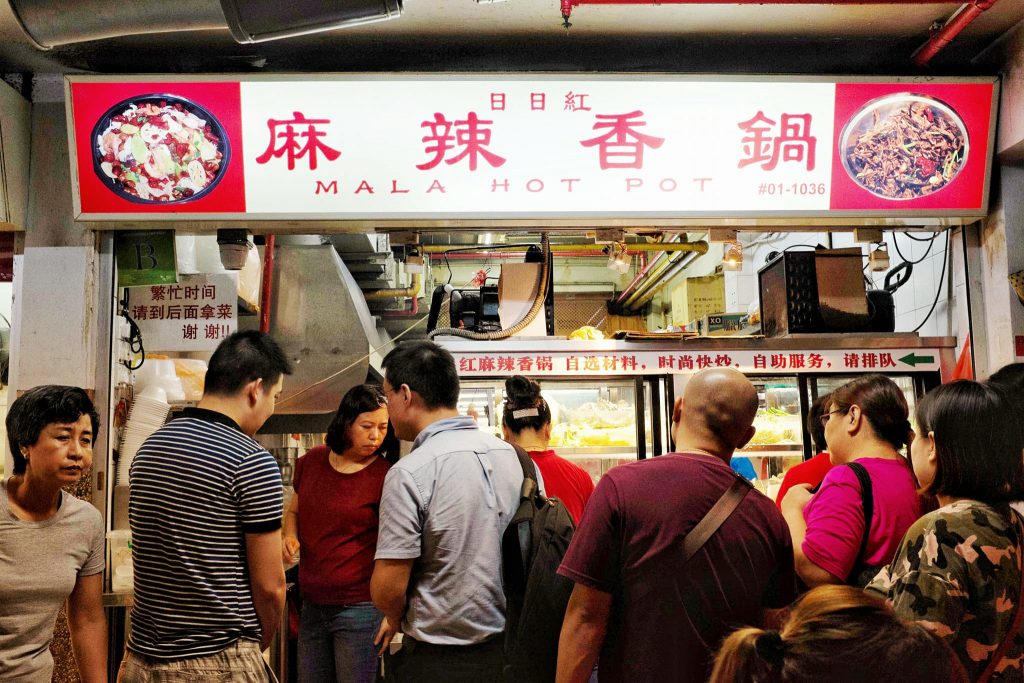
When I asked my friends what they knew about MLXG, all of them directed me to Ri Ri Hong. Even those who did not eat Mala had noticed the crowds and long queues. Piao Xiang Ma La, though it continues to be popular and highly-rated, just never attained the same level of hype.
So how did it come to pass that Ri Ri Hong should become the Mala success story?
The story of MLXG is undeniably a story about migration.
The Henan native credits his success to the ten years that he spent cooking Thai food in Changi. From his Malaysian bosses, he learnt how to cater to ‘The Singaporean Palate’—which enjoys spicy foods but dislikes dishes that are too salty or oily. He is likewise very open to the idea of change and has adapted his formula many times after receiving feedback from local customers.
“It’s really good when customers tell me what they prefer. When they do, I can cook it according to what they want. The feedback is important because all food must adapt to local taste. It’s the only way any food can survive in the long-term,” he explained.
This is all good and true, but it’s also a pretty standard response. Less-salt-less-oil is the gospel preached by almost every MLXG cook I’ve met. When I press him a little further, he cites the popularity of Yong Tau Foo and Cai Png as precedents to MLXG’s popularity, as well as the culinary adventurousness of younger Singaporeans.
“Singapore’s youth are relatively open, when they see new things, they will want to try ,” he said, “And with MLXG, you get the added benefit that it’s freshly-cooked.”
Later, Mr Yang Jian provides a more pragmatic explanation. In his view, success is as much about good location as good taste. This is especially true in the early days when MLXG was either a) totally unknown or b) mistaken for Yong Tau Foo.
“You need a sizable population of Chinese Nationals to be your first customers; once they start eating, they will introduce the MLXG to their Singaporean colleagues, who will then spread the word and so on,” he suggests.
That’s why he opened his first stall in a far-flung corner of Yishun: the nearby industrial estate had a sizable PRC population who were craving a taste of home.
“At first, it was 80% China Nationals 20% Singaporeans. Then it became 50/50. Now, 90% of my customers are Singaporeans,” he adds.
Following Yang Jian’s hypothesis, Chinatown was the perfect place for MLXG to thrive and expand. Not only did it have a sizable PRC community who was already visiting the area for food, but it also boasted a ravenous CBD population at noontime. In other words, a perfect combination of the initiated and the curious; fertile grounds for the growth of a little-known dish.
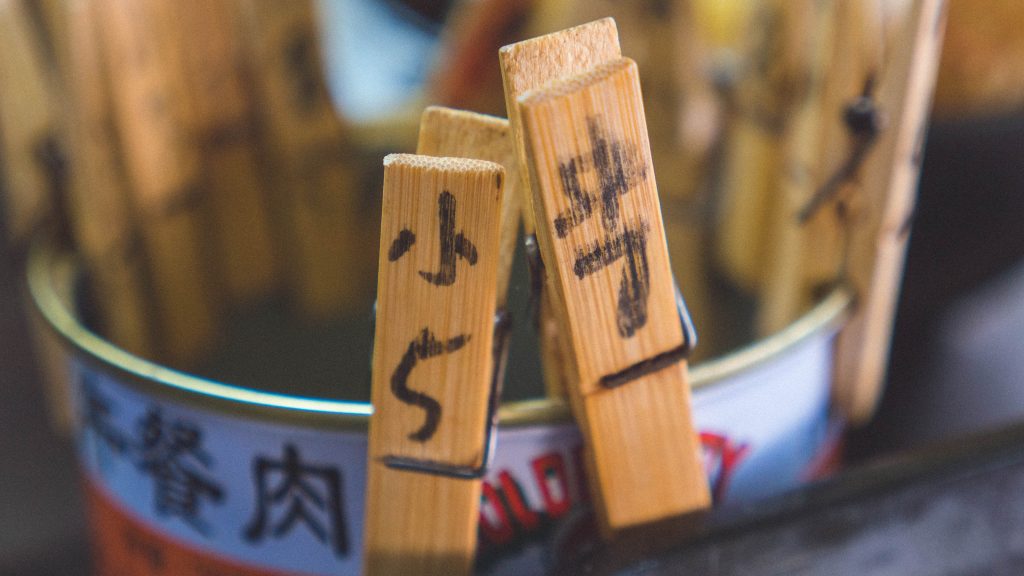
“Their main problem is the Mala sauce. Everything else is pretty easy, but the thirty-odd spices which make up your mala sauce and exact ratio of each ingredient is not something I can disclose, “ he said.
“One of the first stall assistants I hired was a Singaporean. He started chopping ingredients, but later on, I taught him how to fry the dish. He left for a while and tried to set up his own MLXG business, but it failed. His business partner got very angry and said he didn’t learn anything from me. But that’s not true … the only thing he didn’t know was how to make the Mala sauce.”
These days, the competition has died down, and the queues are nowhere as crazy. There’s less profit—perhaps—but it’s a situation that suits Mr Mao Cong Fang just fine. Having started the business at forty purely to provide for his two young children, he is content with staying in the background now that they’re mostly grown-up.
He doesn’t exactly miss the days when rivals would lodge complaints in the hopes of shutting him down. Neither does he miss the early days when the stall was a morning-till-night one-man show.
Despite the stall’s fame and success, he hasn’t made any expansion plans. Some customers want him to sell his Mala spice as a pre-packaged instant mix, but he seems too tired to deal with the manifold complexities that franchising/branding would entail.
“I thought about it, but what if they bring it home, cook it, and it’s not the same taste? Then they would …” he explained, his voice trailing off into a whisper before he could complete the thought.
“I’ve already given my best years to MLXG. Now, I’m too old and tired even to cook a full shift,” he adds with a slightly embarrassed laugh.
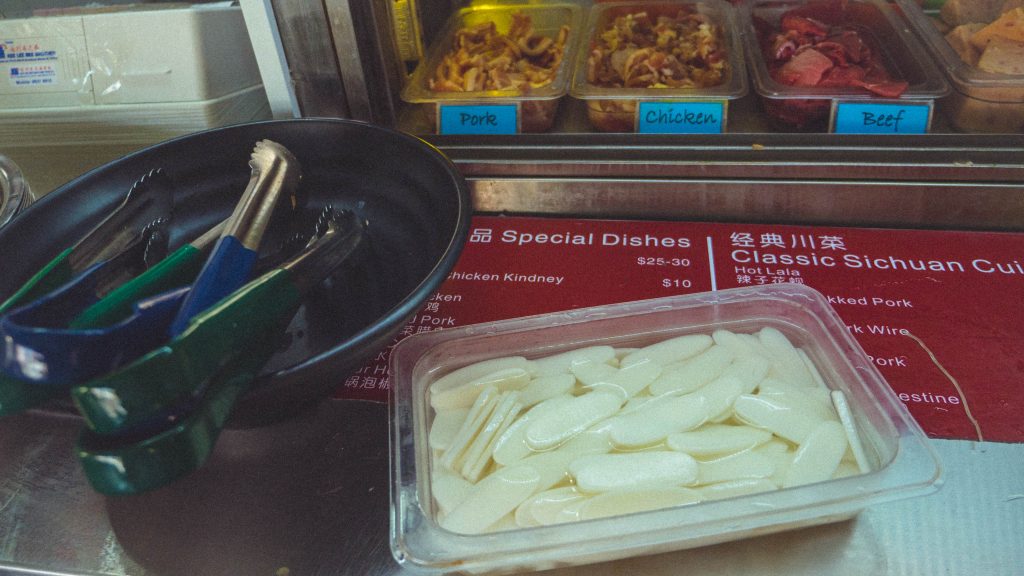
“A good dose of chilli helps you to sweat out the excess humidity, so maybe it’s geographical?” says Mr Zhang, citing a popular Chinese explanation of why Sichuan loves Mala.
Others like Mr Yang Jian, on the other hand, have no patience for amateur navel-gazing. Good food is good food is good food. It requires no explanation at all. It just needs to be tasted to be believed. When I prod him for ‘deeper’ reasons’, he stares through me as if I had asked him why people enjoy steak or sex.
“It’s just delicious. The first time I ate it in Singapore, I felt like going back the next day, and the day after that,” he answers.
For me, however, this question is a little more fraught. Singapore is ever ready to accept new cultures and new cuisines, but not so much the people who cook them. Nevermind that the kitchens of Din Tai Fung or Tunglok are densely staffed with foreign-born chefs. Nevermind that many China Nationals work in Zi Char places like Mr Mao Cong Fang once did.
Acceptance of a flavour or a brand like Haidilao doesn’t necessarily entail an equal recognition of the forces behind it.
Mr Cong Fang senses this too. That’s why—I think—he declined an interview with Lianhe Wanbao, even though it would mean roaring business for months. At the heart of this reluctance was a fear that people would complain about his presence, just as I am right now worrying about the implications of writing about MLXG. After all, immigrants should be not seen and not heard. What if someone complains about how MLXG has pushed out other stalls? What if it turns into another argument of us v. them by way of the comments section, as it has done so many times before?

Likewise, it is also the story of BreadTalk Group’s reverse migration into the China market, without which the MLXG might never have arrived in Singapore at all.
This is why the dish fascinates me.
It’s not just the ‘explosive fragrance’ or the excess humidity inside my body. It’s a metaphor of sorts; somewhere inside me is a fool that thinks if locals can accept MLXG, then there’s no reason why they can’t accept Others. All that’s needed is a few tweaks. Remove the tangy peppercorns, dial down the salt, and everything will be a-okay, perhaps.
After all, if luncheon meat can co-exist with Shanghai Nian Gao, and eggplant can co-exist with crabstick, then there’s no reason why ingredients even more similar can’t do the same.

